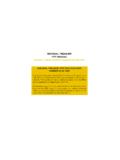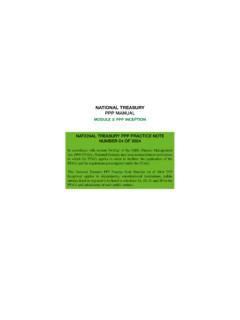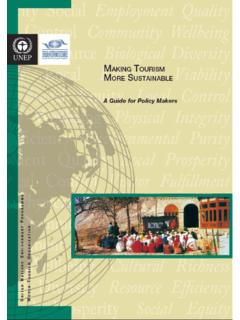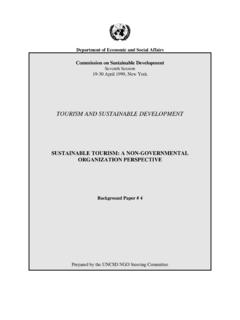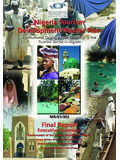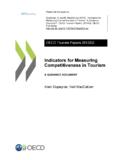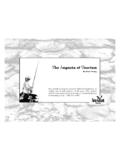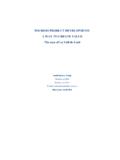Transcription of NATIONAL TREASURY PPP TOOLKIT FOR TOURISM
1 Issued as NATIONAL TREASURY PPP Practice Note Number 01 of 2005iNATIONAL TREASURYPPP TOOLKIT FOR TOURISMGETTING STARTED: 1. UNDERSTANDING THE PPP TOOLKIT FOR TOURISMiiPPP TOOLKIT for TOURISM Getting started: 1. Understanding the PPP TOOLKIT for Tourismissued as NATIONAL TREASURY PPP Practice Note Number 01 of 2005iiiCONTENTSSUMMARY OF THE CONTENTS OF THE TOOLKIT ivINTRODUCTION 1 WHAT IS A TOURISM PPP? 2 PPPs in general 2 The benefits of TOURISM PPPs 2 Defining a TOURISM PPP 3 Typical TOURISM PPP products 4 PPPs in relation to land incorporations and co-management plans for extended protected areas 5 PPPs in relation to other uses of state property and licence systems 6 THE PPP REGULATORY ENVIRONMENT 8 The Public Finance Management Act 8 TREASURY Regulation 16 9 The role of NATIONAL and provincial treasuries in PPPs 9 Institutions to which the TOOLKIT applies 10 Other important legislation and regulations 10 THE PROCESS FOR TOURISM PPPs 13 The TOOLKIT s approach 13 The small cap and large cap routes 14 ANNEXUREA nnexure 1: TREASURY Regulation 16 to the PFMA ivPPP TOOLKIT for TOURISM Getting started: 1.
2 Understanding the PPP TOOLKIT for TourismSUMMARY OF THE CONTENTS OF THE TOOLKITG etting started 1. Understanding the Public Private Partnership TOOLKIT gives an introduction to the TOOLKIT , defines a TOURISM PPP, describes the regulatory environment, introduces key concepts and introduces the PPP project cycle for TOURISM PPPs. Getting started2. Clarifying some key policy issues gives guidance on policy issues specifically relevant to TOURISM PPPs. Module 1 PPP inception and pre-feasibility phase for TOURISM PPPs explains the steps to be followed in the inception and pre-feasibility phases and provides templates for key 2 Feasibility study and procurement phases for small cap TOURISM PPPs explains the steps to be followed in the feasibility and procurement phases for the small cap route, and provides templates for key 3 Feasibility study and procurement phases for large cap TOURISM PPPs explains the steps to be followed in the feasibility and procurement phases for the large cap route, and provides templates for key 4 Managing the TOURISM PPP agreement provides guidance to institutions for managing TOURISM PPP and annexures to the ToolkitThe templates that accompany each module of the TOOLKIT standardise the terms and conditions under which TOURISM PPPs are implemented.
3 They are designed to help the project officer complete quality documentation. The annexures provide additional information or guidance. While the templates and annexures are listed on each module s contents page, they are not part of the printed version of the TOOLKIT . Instead, each document can be downloaded, in Microsoft Word or Excel, from the CD accompanying the TOOLKIT and from the PPP Unit s website, A summary of what is contained in each template and annexure is provided at the end of each module, or the relevant section within the module. issued as NATIONAL TREASURY PPP Practice Note Number 01 of 20051 INTRODUCTION South Africa has established a firm regulatory framework for NATIONAL and provincial institutions1 to enter into public private partnerships2 (PPPs). This is set out in TREASURY Regulation 163 issued in terms of the Public Finance Management Act, 1999 (PFMA). Furthermore, NATIONAL TREASURY s PPP Manual and Standardised PPP Provisions have been issued as PPP practice notes in terms of section 76(4)(g) of the PFMA to make the application of the PFMA and its regulations easier.
4 Municipal PPPs are regulated under the Municipal Finance Management Act, 2003 (MFMA) and its regulations, and similar PPP guidance is being devised for this sphere of government. South Africa s TOURISM industry has experienced considerable growth in the last decade, but despite the many opportunities that exist, the development of TOURISM -based businesses on state-owned land has been slow. The PPP Manual and Standardised PPP Provisions cannot, however, be summarily applied to TOURISM PPP projects. NATIONAL TREASURY therefore seeks to boost this strategic sector of the economy by providing practical guidelines in the form of this PPP TOOLKIT for TOURISM , referred to throughout as the Toolkit4. It makes the PPP process relevant to the particular characteristics of the country s nature and heritage TOURISM industry. The TOOLKIT should make it easier for institutions and the private sector to enter into TOURISM -related partnerships on state property5 managed by NATIONAL and provincial government institutions.
5 Specifically, the TOOLKIT :establishes appropriate systems, standards and contracting terms for a wide spectrum of TOURISM and TOURISM -related PPPs in compliance with the PFMA and TREASURY Regulation 16streamlines the PPP process for the sector, creating consistency and certaintyenables relevant institutions to build the necessary capacity to prepare for, procure and manage these PPPsfurthers the drive to ensure black economic empowerment (BEE) in the TOURISM sectorfurthers the drive to support and promote the growth of small, medium and micro enterprises (SMMEs) in the TOURISM sectorseeks to build private sector confidence in entering into TOURISM and TOURISM -related PPPs in South Africa. 1. See Annexure 1: TREASURY Regulation 16 : See Annexure 1: TREASURY Regulation 16 : See Annexure 1: TREASURY Regulation 16 .4. The TOOLKIT is NATIONAL TREASURY PPP Practice Note Number 01 of 2005. 5. See Annexure 1: TREASURY Regulation 16 : TOOLKIT for TOURISM Getting started: 1.
6 Understanding the PPP TOOLKIT for TourismWHAT IS A TOURISM PPP?PPPs in generalA PPP is clearly defined in TREASURY Regulation 16 to the PFMA. It is essentially a contractual arrangement whereby a private party6 performs an institution s functions7, and/or makes use of state property for its own commercial purposes. The private party assumes substantial financial, technical and operational risks associated with those functions or the use of state property. In return, the private party receives a benefit according to pre-defined performance criteria. This benefit may be entirely from a service tariff or other user charges, an institution s budget, or a combination of the two. The private party s responsibilities typically include the financing, design and construction of a facility, as well as its operation and maintenance, for a specified period of time. Where substantial capital investments are made by the private party under such arrangements, the PPP agreements8 tend to be of long duration.
7 A distinct characteristic of a PPP is that it is for a fixed period, during which time ownership of the immovable assets typically vests with the state, and control over these assets reverts to the state at the termination of the PPP is just as important to define what a PPP is PPP is not a simple outsourcing of functions with substantial financial, technical and operational risk retained by the institution (such as a service contract).A PPP is not a donation by a private party for the public PPP is not the privatisation or divestiture of state assets and/or PPP is not the commercialisation of a public function by the creation of a state-owned PPP does not constitute borrowing by the benefits of TOURISM PPPsSouth Africa s TOURISM industry has been described as the country s new gold . It is one of the largest contributors to the country s gross domestic product (GDP), and has a significant impact on job creation. A number of NATIONAL and provincial government institutions control an array of protected areas and associated state assets that are, in many ways, under-utilised and which 6.
8 See Annexure 1: TREASURY Regulation 16 : See Annexure 1: TREASURY Regulation 16 : See Annexure 1: TREASURY Regulation 16 : as NATIONAL TREASURY PPP Practice Note Number 01 of 20053offer significant opportunity for investment. These institutions are subject to the provisions of TREASURY Regulation 16 and some have already succeeded in attracting private sector investment in these assets. The transactions have generally involved private parties bidding for the right to invest in and commercially use state property in support of conservation, in return for the payment of a concession fee to the institution. The PPP agreement is for a fixed term, after which the assets revert to the institution. The benefits from these deals for the private party are that it gets access to unique TOURISM sites and is able to get a competitive return on its investment. The benefits for the institution are that it gets revenue, savings and an assets upgrade.
9 At the same time, it facilitates BEE, stimulates SMMEs, job creation and skills in the local economy, and encourages growth in the TOURISM industry. There is clearly considerable benefit to be realised for the country in TOURISM -related PPP a TOURISM PPP TOURISM PPPs fall firmly within the TREASURY Regulation 16 definition of a PPP, in that they entail a commercial transaction between an institution and a private party, in terms of which the private party:performs an institutional function on behalf of an institution (if applicable) and/oracquires the use of state property for its own commercial purposes andassumes substantial financial, technical and operational risks in relation to the use of the state property andreceives a benefit from performing the function and/or using the state property by way of charges or fees collected by the private party from users or customers of a service provided to PPP TOOLKIT for TOURISM is principally based on the application of the PPP definition.
10 A private party acquires the use of state property for its own commercial purposes, assuming substantial risk, and receives a benefit from charges collected from users. All conservation institutions have enabling statutes, many of which include various provisions for the institution to operate commercial ventures or provide TOURISM amenities in protected areas. Therefore, if the institution grants rights to a private party to operate commercially on land managed by the institution (even if it is not state property), this could constitute the private party performing an institutional function. This aspect of the definition of a PPP in TREASURY Regulation 16 therefore applies, implying that the private party undertakes commercial activities on behalf of the institution. 9. Paraphrased from TREASURY Regulation Definitions, PPP . See Annexure TOOLKIT for TOURISM Getting started: 1. Understanding the PPP TOOLKIT for TourismMost conservation institutions, however, view their core function as managing conservation rather than operating commercial businesses.
